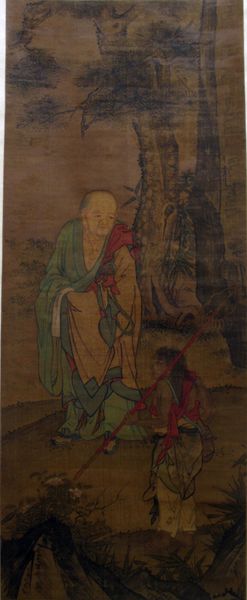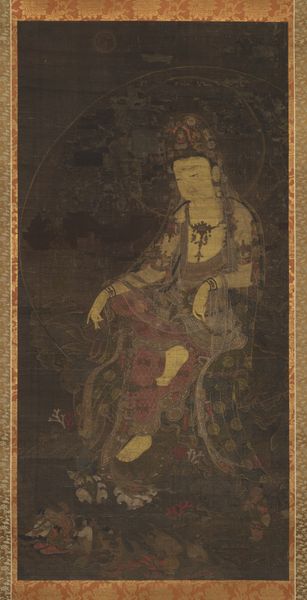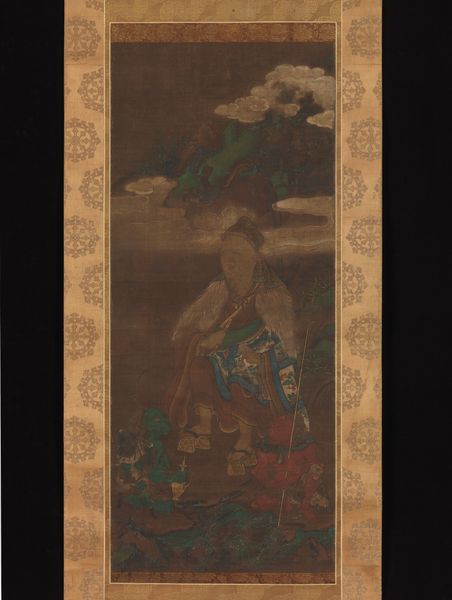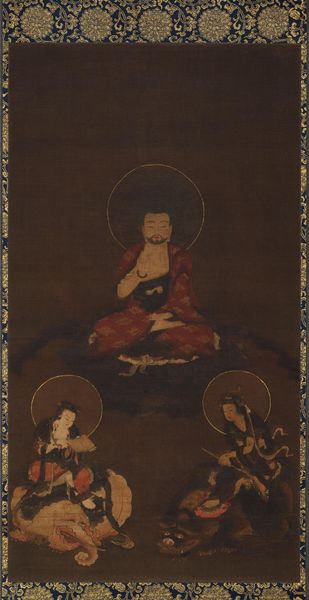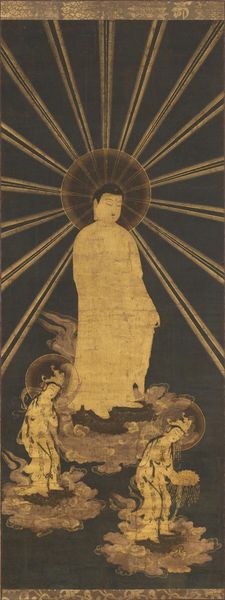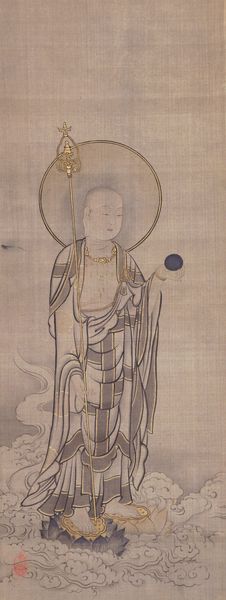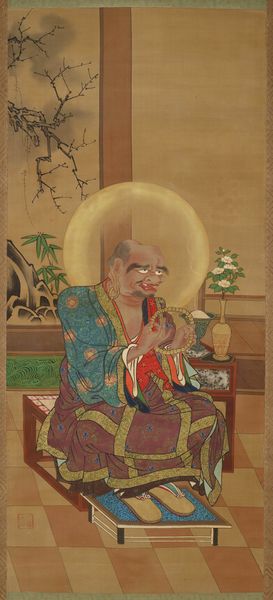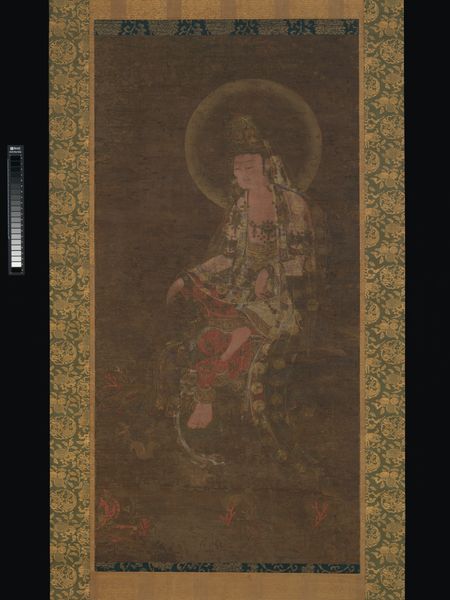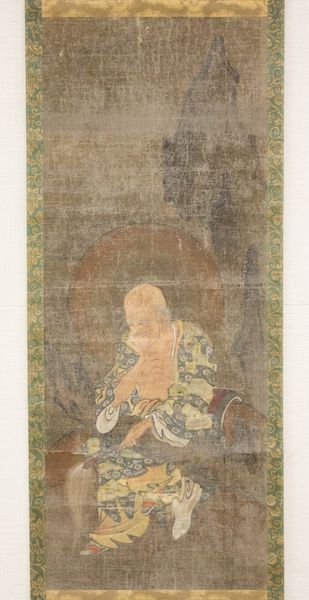
Portrait of Xuanzang (Genjō) with Attendant 1300 - 1333
0:00
0:00
painting, watercolor
#
portrait
#
medieval
#
water colours
#
narrative-art
#
painting
#
asian-art
#
figuration
#
watercolor
#
miniature
Dimensions: Image: 48 3/4 x 29 1/4 in. (123.8 x 74.3 cm) Overall with mounting: 87 1/2 x 37 1/2 in. (222.3 x 95.3 cm) Overall with knobs: 87 1/2 x 39 1/2 in. (222.3 x 100.3 cm)
Copyright: Public Domain
Editor: This watercolor piece, "Portrait of Xuanzang with Attendant," dating back to the early 14th century and attributed to Kasuga Motomitsu, feels remarkably still. The figures are set against a dark background which is pretty striking. What symbolic meaning do you find resonating within this portrait? Curator: Well, observe Xuanzang's serene composure and the accoutrements around him. Doesn’t that small, bright-eyed figure with green skin feel otherworldly? Consider that Xuanzang was a Buddhist monk, known for his arduous seventeen-year pilgrimage to India and his translation of scriptures. This image isn't just a portrait; it's a symbolic representation of devotion, the attendant is probably an ogre. The scripture in Xuanzang's hand and the ritual objects carried by the attendant might allude to this pivotal journey. Can you sense the narrative being conveyed through these symbols? Editor: Yes, the ogre attendant contrasts pretty starkly with the monk, emphasizing his spirituality maybe? Are these iconographic elements consistent with other depictions of Xuanzang? Curator: Often, yes, although stylistic interpretations would have varied across regions and time periods. This rendering, particularly with the otherworldly attendant, likely served to underscore the profound transformative nature of Xuanzang's quest, playing on established iconographic understandings. Editor: This painting and its iconographic density gives me a lot to consider. Thank you for offering insights into the cultural symbols that are interwoven here. Curator: My pleasure, contemplating how visual motifs evolve is always revealing, I also learned something new about the journey it encodes.
Comments
No comments
Be the first to comment and join the conversation on the ultimate creative platform.
